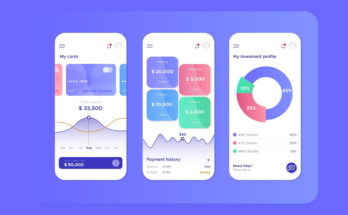In the fast-paced world of software development, it is essential to ensure that your apps work correctly and efficiently. In this case, performance testing is helpful. Performance & load testing services, an important phase in the software development life cycle, aims to evaluate how well a programmer performs under diverse conditions. We’ll examine performance testing’s objectives in this piece and go into why it’s so crucial in the present technological climate.
The Key Objectives of Performance Testing
- Evaluation of Response Time and Speed (Objective: Speed Optimisation)
Speed matters in the digital age. Users want programmes to respond to user inputs fast. Performance testing’s primary objectives include measuring an application’s reaction time and pinpointing trouble areas.
- Stability under Standard Load (Goal: Stability Improvement)
An application should remain stable even while it is working at its typical load. Performance testing makes sure that when the software is regularly used, it won’t crash or behave unpredictably.
- Scalability Evaluation (Scalability Improvement Goal)
The capacity of your application should increase along with the number of users. Testing your software’s performance will help you establish how well it scales and whether it can handle an increase in users without suffering performance loss.
- Utilising Resources (Goal: Resource Optimisation)
Utilising resources wisely is essential. Performance testing reveals any application components that are resource-hungry, enabling developers to optimise resource usage.
- Reliability in a Stressful Environment (Stress Test Objective)
It is necessary to push an application to its limits in order to fully comprehend its potential. Performance testing includes stress testing, which evaluates how effectively the software works under challenging situations.
- Peak Load Handling (Goal: Testing Loads)
It’s crucial to understand where your application will fail. The maximum load the software can withstand before performance deteriorates or crashes is determined through load testing.
- Evaluation of network latency (goal: latency reduction)
Performance can be severely impacted by network latency in today’s connected society. Performance analysis evaluates network-related problems and lowers latency.
- Database performance (goal: database improvement)
The heart of many apps is a database. Performance testing analyses the database interaction efficiency of an application and spots any bottlenecks.
- Improvement of the User Experience (User Satisfaction Goal)
Performance testing’s ultimate goal is to improve the user experience as a whole. You can make sure people engage with your application without difficulty and irritation by fixing performance concerns.
- Service Level Agreements are being followed (SLA compliance goal)
Numerous apps are subject to strict service level obligations. The consistency of these agreements is helped by performance testing.
- Security when Under Stress (Objective: Security Evaluation)
The main issue is security. Performance testing might identify flaws that could be used against a programme when it is heavily loaded.
- Cost-Efficiency (Goal: Cost Saving)
Cost reductions may result from performance optimization. Infrastructure expenses can be decreased by effectively employing resources.
- Testing for compatibility (Goal: Assurance of compatibility)
Applications must function on a variety of platforms and devices. Performance testing makes sure that the programme works well in various setups.
- Continuous Enhancement (Goal: Ongoing Improvement)
Performance testing is a continuous process. To achieve continuous performance improvement, it should be incorporated into the development process.
- Customer delight (Objective: Increase Customer Satisfaction)
Performance testing’s primary goal is to pleasure customers in the end. Users who are happy with an application are satisfied users.
Conclusion
It is imperative in the cutthroat world of custom software development services in India that help your apps to achieve their performance goals. The secret to reaching this objective is performance testing. You may improve your software’s performance, cut expenses, and ultimately provide a better user experience by evaluating speed, stability, scalability, and other crucial variables.
FAQs
1. What makes performance testing crucial?
Performance testing is essential because it enables the detection and resolution of performance problems in software, ensuring the smooth and effective operation of programmes.
2. When in the development cycle should I conduct performance testing?
Performance testing ought to be done continuously throughout the development process, with a focus on advancement.
3. Which instruments are frequently employed for performance testing?
JMeter, LoadRunner, and Gatling are a few of the frequently used performance testing tools.
4. Can performance analysis identify security flaws?
Yes, performance testing can reveal security flaws that could be used in a load-based attack.
5. How can I be certain that my application satisfies its performance goals?
Your application must undergo ongoing optimisation and regular performance testing to function as intended.




